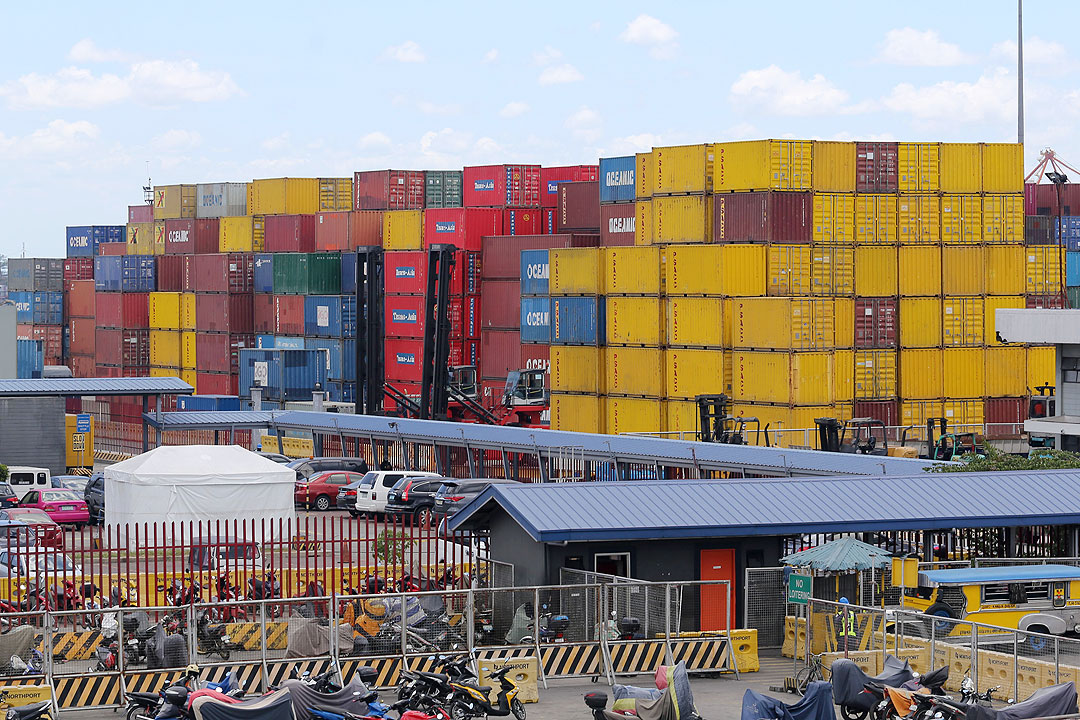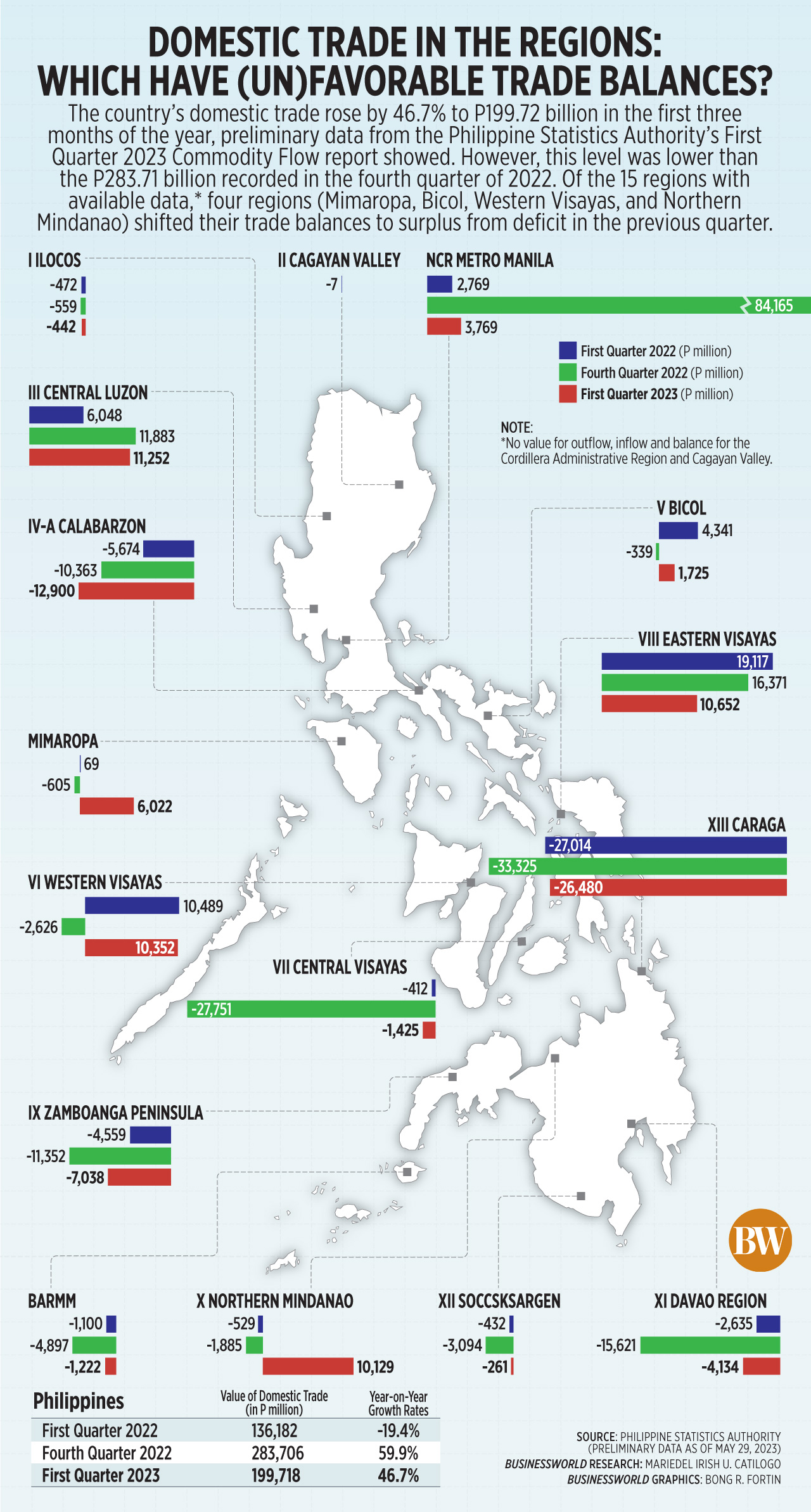Q1 domestic trade value, volume climb

THE DOMESTIC TRADE in goods grew by 46.7% year on year in the first quarter to P199.72 billion, the Philippine Statistics Authority (PSA) said on Tuesday.
However, this amount was smaller than P283.71 billion in the fourth quarter of 2022, preliminary data from the PSA’s Commodity Flow in the Philippines report showed.
The first quarter’s 46.7% annual growth in trade value was slower than the 59.9% expansion in the fourth quarter of 2022.
But this was lower than 6.14 million tons logged in the fourth quarter last year.
Commodity flow includes all goods transported by water, air, and rail transport, with shipping accounting for the bulk of the commodities.
Union Bank of the Philippines Chief Economist Ruben Carlo O. Asuncion said that the domestic trade performance mirrors the country’s slower annual economic output in the first quarter.
“Strong robust domestic demand continued and has kept domestic trade elevated for [first quarter]. Purchasing Managers’ Index numbers in the first quarter do support this positive trend,” Mr. Asuncion said in an e-mail.
The Philippines’ gross domestic product (GDP) expanded by 6.4% in the first quarter, the slowest in eight quarters or since the 3.8% decline in the first quarter of 2021.
Meanwhile, ING Bank N.V. Manila Senior Economist Nicholas Antonio T. Mapa, said in an e-mail that the “year-on-year numbers continued to benefit from base effects.” Mobility curbs were tightened in the first quarter of 2022 due to an Omicron-fueled spike in coronavirus cases.
All of the 10 commodity categories monitored by the PSA showed annual expansion in trade by value. This was led by beverages and tobacco (83.7%); food and live animals (67.6%); chemicals and related products (59.7%); manufactured goods classified chiefly by material (46.4%); and mineral fuels, lubricants and related materials (40.8%).
Annual growth was also recorded for commodities of machinery and transport equipment (40.3%); crude materials, inedible except fuel (35.5%); miscellaneous manufactured articles (22.1%); animal and vegetable oils (8.9%); and commodities and transactions not classified elsewhere in the Philippine Standard Commodity Classification (7.9%).
The machinery and transport equipment had the largest value of traded commodities amounting to P68.24 billion, accounting for 34.2% of the total. It was followed by food and live animals at P51.10 billion (25.6%) and manufactured goods classified chiefly by material at P28.77 billion (14.4%).
value, Central Luzon recorded the largest trade surplus in the first quarter amounting to P11.25 billion, after recording P11.95 billion in outflows and P700.07 million in inflows.
Western Visayas accounted for the most goods traded by value with an outflow value of P44.70 billion.
Central Visayas posted the largest inflow value of P44.33 billion.
The trade balance is the difference between the outflow value and inflow value. A surplus happens when trade outflows exceed inflows, while the opposite occurs in deficit.
Analysts expect the growth of the domestic trade to slow in the second quarter.
“With the economy now open, we can say that activity will expand, however, we note a slowing pace of gains as high inflation and elevated borrowing costs begin to bite,” Mr. Mapa said.
While there will be a slowdown, Mr. Ricafort said demand will remain strong and lift domestic trade. He noted the anticipated disinflation and a pause in the Bangko Sentral ng Pilipinas’ monetary tightening bodes well for domestic trade prospects in the next few months.
BSP Governor Felipe M. Medalla earlier this month signaled an extended pause on interest rates. At its May 18 meeting, the Monetary Board decided to keep its policy rates unchanged.
The BSP’s next policy-setting meeting is on June 22. — Mariedel Irish U. Catilogo

